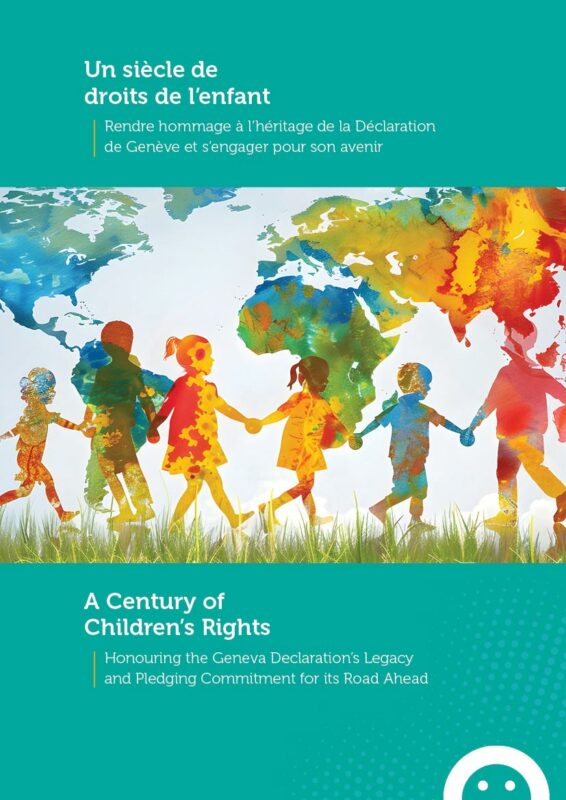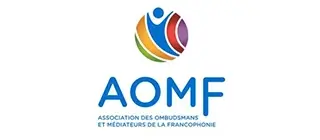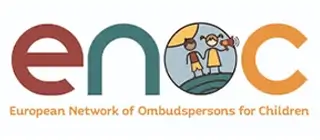100 Joer Kannerrechter
A Century of Children’s Rights
Honouring the Geneva Declaration’s Legacy and Pledging Commitment for its Road Ahead

This book celebrates the progress made in promoting and protecting children’s rights. On the centenary of these rights, it looks back at the major advances and obstacles overcome.
But the journey is far from over. Children’s rights are constantly evolving, shaped by contemporary realities and the aspirations of tomorrow. Each page bears witness to a living commitment, emphasising that this cause remains a collective and ongoing effort.
More than a retrospective, this book pays tribute to current actions and calls for active participation. It invites reflection and commitment, reminding us that defending children’s rights is a shared responsibility that transcends generations and borders.
Summary
Ann Skelton – Epilogue
A centenary provides a moment to reflect
Un centenaire est l’occasion de faire le bilan – et ce livre nous permet de découvrir une série de réflexions et d’idées nées durant ce siècle, de contempler la situation actuelle et d’envisager l’avenir des droits de l’enfant. Le centième anniversaire de la Déclaration de Genève sur les droits de l’enfant nous invite également à nous souvenir de l’œuvre pionnière de l’anglaise Eglantyne Jebb, mentionnée dans plusieurs chapitres, et de celle de Janusz Korczak, autre figure de proue de la réflexion sur les droits de l’enfant, mort avec deux cents enfants au camp d’extermination de Treblinka en 1942, 18 ans seulement après l’adoption de la Déclaration […]
Charel Schmit – Préface
One century of children’s rights: a legacy and an international commitment that stand the test of time
The year 2024 marked a century of struggle and significant advances for children’s rights. By adopting the Geneva Declaration in 1924, the international community set a historic milestone: the foundations of an international movement for the defence of children’s rights, an unprecedented commitment to improving the living conditions and well-being of children around the world. This publication is intended to pay tribute to the pioneering spirit of a century-old social movement that is too little known in the collective memory. It is the result and follow-up to a lecture given by Dr Philip Veerman at the invitation of OKAJU on 23 February 2023 at the Mënscherechtshaus in Luxembourg, under the auspices of the Luxembourg Commission for UNESCO.
Philip E. Veerman
The Declaration of Geneva put children’s rights on the map, but have we made any progress since then?
The Declaration of Geneva, adopted in 1923 and upgraded in 1924 by the League of Nations, marked the first global recognition of children’s rights, championed by Eglantyne Jebb and the Save the Children Fund. This pioneering text shifted perceptions of childhood, emphasizing universal humanitarianism and setting foundational principles for child welfare. However, its initial view of children as passive recipients of care contrasts with modern frameworks like the UN Convention on the Rights of the Child, which recognize children as active rights holders. Despite significant progress, contemporary crises and geopolitical tensions challenge the universalism of these ideals, underlining their ongoing relevance.
Eliza Smierzchalska
Janusz Korczak: Interrogating the Geneva Declaration
The name Janusz Korczak – that of a Polish-Jewish writer, paediatrician and educator who was deported and murdered in Treblinka alongside the children from his orphanage – has been linked to the fight for children’s rights for a century. Although he is recognised as the precursor of the Convention on the Rights of the Child and his name is frequently associated with the Geneva Declaration, we tend to forget that Janusz Korczak (formerly named Henryk Goldszmit) did not sign the Declaration. Indeed, he was critical of it in his book A Child’s Right to Respect, first published in late 1928, arguing that: “The lawmakers of Geneva confused obligations and rights. The tone of the Declaration is one of persuasion, not of insistence: it is an appeal to goodwill, a request for kindness”.
To better understand the meaning of these words and gauge their significance today, we need to look back at the socio-cultural context in which Henryk Goldszmit became Janusz Korczak. His career as an educator and pedagogue, as well as his literary and pedagogical texts, are invaluable tools for understanding the distinction that he drew between child protection and children’s rights. Finally, as we celebrate the centenary of the Geneva Declaration at a time when the world is in crisis, it is fitting to ask how Korczak’s legacy is useful – not only for transforming our view of childhood and our relationship with children, but also for rethinking the place of children in democratic societies.
Jörg Gerkrath
Les droits humains, l’enfant et la justice
En célébrant le centenaire des droits de l’enfant, cet article retrace leurs origines dans la philosophie du droit naturel, influencée par des penseurs tels que Hobbes et Pufendorf, et analyse leur lente reconnaissance juridique. Ces droits, consacrés par des textes majeurs comme la Déclaration de Genève (1924) et la Convention de New York (1989), visent à protéger les enfants et à garantir leur bien-être en plaçant l’intérêt supérieur de l’enfant au centre des décisions. L’article examine également les défis liés à leur mise en œuvre dans le domaine de la justice, où il est crucial de concilier ces droits avec ceux d’autrui tout en respectant les impératifs juridiques et éthiques.
Éric Delemar
From 1924 to 2024: recognising children as subjects of rights remains a social and democratic challenge
The Geneva Declaration of 1924, influenced by the work of Janusz Korczak, marked a historic turning point by recognising children’s rights and affirming adults’ responsibility towards them. Followed by the 1959 Declaration and the 1989 UN Convention on the Rights of the Child, these texts aim to guarantee children’s full development and make their best interests a priority. However, the need to protect children from poverty, all forms of violence and mental-health problems remains crucial in the face of contemporary crises. The benevolent approach to education advocated by Korczak reminds us of the urgent need to consider children as subjects of rights in their own right, while applying the universal principles of the Convention on the Rights of the Child.
Simone Beck
Children in conflict zones: dreams and realities
In the nineteenth century, when industrialisation and the migration of workers to cities broke up the intergenerational family unit, children’s living conditions changed. They were forced to live in cramped conditions, sometimes with strangers. Even though both parents worked, the children often had to contribute to the family’s resources by working themselves. It was at this time that charitable organisations and various political movements began to concern themselves with the fate of these minors, who were forced to lead a hard adult life. The world wars of the twentieth century, which left millions of children orphaned, refugees or both, led to the first major multinational discussions on their fate within the framework of the League of Nations and then the United Nations. The first result of these discussions was the Geneva Declaration of 1924, followed by numerous other conventions, protocols and recommendations.
It has to be said, however, that these important documents, most of which have been ratified by the majority of the world’s countries, are not withstanding today’s conflicts and natural disasters. In wars where schools are targeted, how can the right to education be guaranteed? In regions where children are so deprived of prospects that they find protection in armed groups, how can we safeguard them? In the face of expanding deserts, rising seas and vanishing forests, in cities that are bombed and sometimes deliberately starved, how can we guarantee children’s basic right to even the most rudimentary food?
Despite these alarming circumstances, multilateral exchanges are more vital than ever. Peace negotiations, economic compromises and the moral support that art and culture can provide all offer a glimmer of hope, including for the lives of children who are the innocent victims of adult conflicts.
Renate Winter
Implementing the United Nations Convention on the Rights of the Child: genuine successes or ratification alone?
The United Nations Convention on the Rights of the Child was first ratified almost three decades ago. Since then, it has been ratified by all Member States save one – the highest number of Member States ever to sign a convention.
However, at the time of writing, no country in the world has fully implemented the Convention. Different countries have encountered different types of challenges and have progressed to varying extents. Drawing on insights gained through her long career in children’s rights and juvenile justice, Renate Winter looks at the progress that State Parties worldwide have made towards implementing the Convention, before exploring the difficulties that are hindering progress in some State Parties.
This article argues that State Parties must create a budget for implementing children’s rights in a way that overcomes the negative impacts on children of certain traditional and religious attitudes. Member States must also consider how they will implement three Optional Protocols related to the Convention. All this needs to be done at a time when the plight of children has worsened rather than improved. In our current geopolitical and social situation, which is making children even more vulnerable to violations of their rights, the need to implement the Convention in full is more pressing than ever.
Natasha Lepage & Julien Wald
Ensuring children’s rights for climate justice
Children are particularly vulnerable to the effects of climate change. The climate crisis is not only an environmental issue; it is a direct violation of children’s rights. From the right to education to the right to health, climate change threatens nearly every aspect of a child’s wellbeing. Despite contributing the least to the problem, children are disproportionately affected by its consequences.
Bruce Adamson
Incorporating the United Nations Convention on the Rights of the Child in Scotland: one hundred years in the making
This chapter traces the journey towards incorporating the United Nations Convention on the Rights of the Child into Scots law. It highlights the historical milestones, advocacy efforts and legislative developments that led to the passing of the United Nations Convention on the Rights of the Child (Incorporation) (Scotland) Act 2024. This landmark legislation integrates the Convention into domestic law, ensuring that children’s rights receive robust protection and that accountability measures and remedies to address violations are put in place.
The chapter also explores the broader legislative changes in Scotland, emphasising the country’s ongoing commitment to children’s rights and the critical role of stakeholders in embedding a rights-based culture. It reflects on the future implications of the Act and the need to measure its success by considering children’s lived experiences and outcomes.
Niall Muldoon
Children’s rights in Ireland and 20 years of the Ombudsman for Children’s Office: where we came from and what lies ahead
Ireland only came into being as an Independent State in 1921, and that was swiftly followed by a bitter civil war. Yet, when it came to signing the Geneva Declaration, all the political and church leaders of the time put their names to it. This indicates that the value they placed on children’s rights was above all else. However, the actions of the State in the following decades showed poor regard for the Declaration, and many thousands of children suffered abuse, neglect and harm in schools, homes and institutions. Ireland then ratified the United Nations Convention on the Rights of the Child in 1992 and began working to improve children’s lives in Ireland.
Ireland established the Ombudsman for Children’s Office in 2004, and in 2012 passed a constitutional amendment that recognised the separate and inalienable rights of children (partially incorporating Articles 3 and 12 of the Convention in limited circumstances). In the 20 years since our Office was established, we have pushed for improvements such as ending the practice of putting children in adult prisons, allowing asylum-seeking children to make complaints to the Ombudsman, listening to children who are vulnerable and disadvantaged (for example, Travellers, those who are homeless, and those who are inpatients in mental health settings), and seeking to abolish the Direct Provision system. We have also spoken on equality for children with disabilities, the rights of children in surrogacy situations, the importance of child rights impact assessments in Government Departments, and the need to rethink how education is delivered and evaluated for children.
The next stage of development for children’s rights in Ireland is to fully incorporate the United Nations Convention on the Rights of the Child into law, and that is what the Ombudsman for Children’s Office will be focusing on for the coming years. Such a move would help Ireland to fully live up to its commitments to children, first stated when ratifying the Geneva Declaration in 1924. It would ensure that children’s rights and their voices are at the forefront of all decisions made within all departments of government, thereby guaranteeing better and more appropriate services for all children. These are outcomes that would make the Irish signatories of the 1924 Declaration proud.
Michel Anglade
Epilogue
As we celebrate the hundredth anniversary of the Geneva Declaration on the Rights of the Child being adopted by the League of Nations in 1924, it is worth taking the time to reflect on not only the achievements but also the remaining – and, in some cases, growing – challenges in fulfilling the rights of all children. […]
Network
An invitation to international dialogue and common reflection on the future
of children’s rights


This book is a contribution from OKAJU (Ombudsman fir Kanner a Jugendlecher) to the ENOC (European Network of Ombudspersons for Children) and AOMF (Association des Ombudsmans et Médiateurs de la Francophonie) networks. It celebrates 100 years of children’s rights, highlighting the ongoing efforts and significant achievements of these networks in promoting and protecting children’s rights worldwide.
1924 – 2024
A renewed commitment to children’s rights
The 1924 Geneva Declaration of the Rights of the Child required a fitting commemoration!
Thus, in late 2022, Philip D. Jaffé, Professor at the University of Geneva and Member of the UN Committee on the Rights of the Child, and Mane Kocharyan, a child rights specialist and a principal collaborator, approached the City of Geneva and extolled the significance of the centennial and the extraordinary contribution of Eglantyne Jebb, the author of the 1924 Geneva Declaration.
It did not take much convincing to garner the enthusiastic support of Christina Kitsos, then vice-president of Geneva’s Executive Council and current Mayor of the City of Geneva. Christina Kitsos, since long a champion of children’s rights, immediately saw the potential to enhance her executive and political action in favor of children’s well-being in the City of Geneva.
But, a turning point occurred when Philip D. Jaffé drafted a revised and updated 2024 Geneva Declaration on the Rights of the Child. Along with the City of Geneva, three leading civil society organizations Save the Children, Enfants du Monde & Terre des Hommes Suisse decided to team up in lockstep on this project and to ensure its success.
Advocate for Children’s Rights
2024 Geneva Declaration
on the Rights of the Child
A Century of Children’s Rights is worth a celebration! Since the 1924 Geneva Declaration, substantial progress has been made with regard to the well-being and protection of children, notably in the health and education sectors. Yet, it’s profoundly troubling that in 2024, these advances are eclipsed by the violence affecting children — a child dies every five minutes according to United Nations statistics, — and by emerging challenges such as digitization and the climate crisis.
It is high time to update the ‘Geneva Declaration’ and mobilize collective consciousness around a renewed commitment to children’s rights: the 2024 Geneva Declaration on the Rights of the Child.